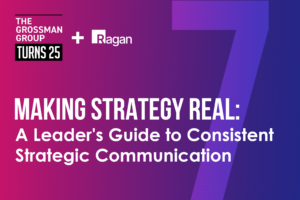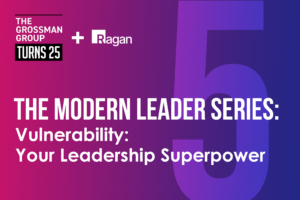Comprehensive approaches to data collection and employee feedback
Uncover the myths surrounding modern work culture and the pivotal role of the Voice of Employee in driving actionable insights for organizational growth.

“No one wants to work nowadays” is a myth. Data shows that there’s much more to the story.
When it comes to understanding employee engagement and satisfaction, Voice of Employee (VoE) data takes center stage. Capturing the thoughts, emotions and experiences of your workforce can uncover insights that shed light on factors that influence their commitment to productivity.
The truth lies in the alignment between company culture and employee expectations. Workloads, retention rates, productivity, innovation and HR efficiency are all crucial elements of a healthy company culture.
When these factors are carefully nurtured, employees are more likely to feel valued, motivated and engaged. Tracking your employee data can help back this up.
Data.
It’s the fuel driving modern organizations. Without data, decisions falter, strategies crumble and, worst of all, growth stalls.
Now, with the increasing trend of remote work, the data landscape has expanded to include the digital footprints of remote employees. These digital traces, spread across various online tools and platforms, offer an additional layer of insights, capturing the nuances of a decentralized workforce in real-time.
Yet, in this rush for numbers and analytics, many organizations miss a vital piece: the valuable insights and feedback from the organization’s very backbone — its employees.
This isn’t just about adding another column to your spreadsheet. It’s about harnessing genuine insights that can shape a company’s future. Enter the VoE.
Why VoE matters
VoE isn’t just another feedback tool; it’s a direct line to the core of your organization. Employees, being on the front lines, interact with products, customers and internal processes daily. Their insights offer more than data; they provide a deeper understanding of the organizational climate.
In this article, we’ll explore various data collection approaches that focus on VoE.
Surveys
Let’s talk about the most common form of data collection: surveys.
They’ve stood the test of time, and there’s a good reason for that. Surveys bring clarity. They transform the myriad of voices in an organization into clear, actionable data.
Think of it as a bridge. On one side, you have the intricate, sometimes chaotic realm of individual experiences, thoughts and feelings. On the other, you have a structured world of numbers, charts and reports.
Surveys span this gap, providing a pathway for the raw essence of the employee experience to be translated into tangible insights. While surveys effectively communicate organizational values and gather feedback, they come with their set of challenges.
Gartner highlights the same by saying, “Organizations are limited to questions that can be asked in the time that employees will spend responding to the survey, and survey fatigue can cause low response rates.” (1)
To combat this fatigue, it’s pivotal that respondents feel their voices are not just collected, but truly heard. Gartner suggests that one of the best ways to address this fatigue is by “Making sure that respondents know they have been heard, and that they have visibility into the specific actions being put in place.”(1)
Additionally, spacing out surveys and allowing adequate time to act on the feedback before the next survey is essential.
Feedback platforms
Platforms like ‘TINYpulse‘ or ‘Officevibe’ allow employees to provide real-time comments, concerns or suggestions. These platforms can be anonymous, which encourages honesty and openness.
Features like gamification, peer recognition and trending feedback topics make these platforms engaging and user-friendly. They can be especially useful for larger organizations where one-on-one meetings are challenging.
Digital listening tools
Digital listening tools are one of the forefront technologies in gauging workplace sentiment, incorporating AI and machine learning to analyze communications and detect potential issues.
This method of data collection offers organizations a real-time window into the thoughts and feelings of their employees, ensuring immediate responsiveness to any arising concerns and fostering a proactive approach to workplace well-being.
Collaboration tool data
With the surge of remote work and distributed teams, collaboration tools like Slack, Microsoft Teams and Zoom have become pivotal in day-to-day operations. While they primarily serve communication purposes, there’s an underlying wealth of VoE data waiting to be tapped into.
Through these platforms, companies not only see the frequency and patterns of communication but can also infer team dynamics, project progress and potential bottlenecks. When paired with sentiment analysis, the content of messages can offer insights into employee morale, satisfaction and potential areas of conflict or concern.
For instance, a spike in late-night messages might indicate looming deadlines or potential project mismanagement.
Application, productivity monitoring and digital EX data
The digital landscape today offers a multifaceted view of an employee’s workday. Beyond traditional productivity metrics, digital EX (Employee Experience) data provides insights into how employees engage with their digital work environment.
In fact, Gartner notes “Employee digital footprints generate a lot of data from which you can infer employees’ productivity, satisfaction with their experience, and wellbeing. But you will only ever see a part of the picture.” (1)
While these digital footprints can paint a vivid picture of an employee’s workflow and provide invaluable insights, it’s essential to approach this data with a holistic lens, understanding that it represents just one facet of the larger picture.
From the applications they access most frequently to the time spent on different tasks, organizations can see which applications boost productivity and which might be causing distractions or inefficiencies using tools like Microsoft’s Workplace Analytics.
Yet, with this wealth of data comes responsibility.
Monitoring should always prioritize employee privacy and should be communicated transparently, ensuring that it’s used to enhance the employee experience rather than micromanage.
After all, the primary goal is to identify areas of improvement, streamline operations and ensure that employees have the best tools at their disposal to perform effectively and efficiently.
Key “Moments That Matter” surveys
In the journey of an employee’s life cycle, certain moments hold more weight than others. These are often referred to as the “Moments That Matter.”
From onboarding to role transition, and even exit interviews, these key instances can provide a goldmine of information on the employee experience.
Surveys focused on these moments give employees the platform to share their feelings and insights about crucial transitions or milestones in their professional journey.
When an employee receives a promotion or undergoes role transition, how did they feel?
Were they equipped with the right tools and training?
Such feedback can be invaluable in refining processes and ensuring smooth transitions for future employees.
Workforce nudgetech data
Nudgetech, or nudging technology, revolves around the concept of nudging individuals towards desirable actions using psychological insights.
In the context of a workplace, this data can reveal how small changes in processes or environments can influence employee behavior.
For example, using software that prompts employees to take short breaks after intensive work periods can aid in reducing burnout. Another application could be nudging managers to acknowledge team members’ accomplishments, fostering a positive work environment.
By collecting and analyzing this data, companies can better understand which nudges are most effective and tailor their strategies accordingly to promote productivity, wellbeing and overall job satisfaction.
In conclusion
Listening to the VoE is more than just collecting feedback; it’s about understanding and acting on it. By combining both new and traditional methods, businesses can get a clearer picture of what their team needs.
But just collecting this feedback isn’t enough. Here’s what businesses should consider doing next:
- Act on Feedback: After gathering insights, make necessary changes. This shows employees that their opinions matter.
- Use the Right Tools: Tools that analyze digital interactions can give insights, especially from remote employees.
- Update Methods: As the company and workforce change, so should the tools and methods used to gather feedback.
- Encourage Sharing: Create a work environment where employees feel comfortable giving feedback at any time.
- Protect Employee Data: When collecting digital data, make sure it’s done in a way that respects privacy.
Taking these steps can help companies improve, grow, and create a better work environment for everyone.







Michael, your analysis of employee feedback and data collection methods is insightful. 👍 It’s crucial to recognize that the “Voice of Employee” isn’t just about data gathering, but truly understanding and acting on it.
Your emphasis on the importance of aligning company culture with employee expectations resonates deeply. 🤔 Capturing employee sentiment through tools like surveys and digital listening platforms offers valuable insights but can be limiting without a holistic view.
Organizational Network Analysis (ONA) might offer additional perspectives by analyzing the interactions and relationships within a company, further enriching the understanding of employee engagement. How do you see ONA complementing traditional VoE tools in enhancing organizational understanding?